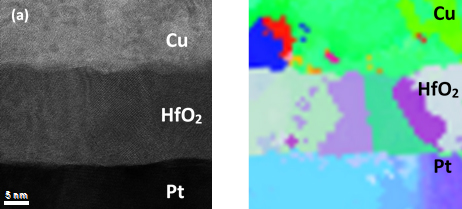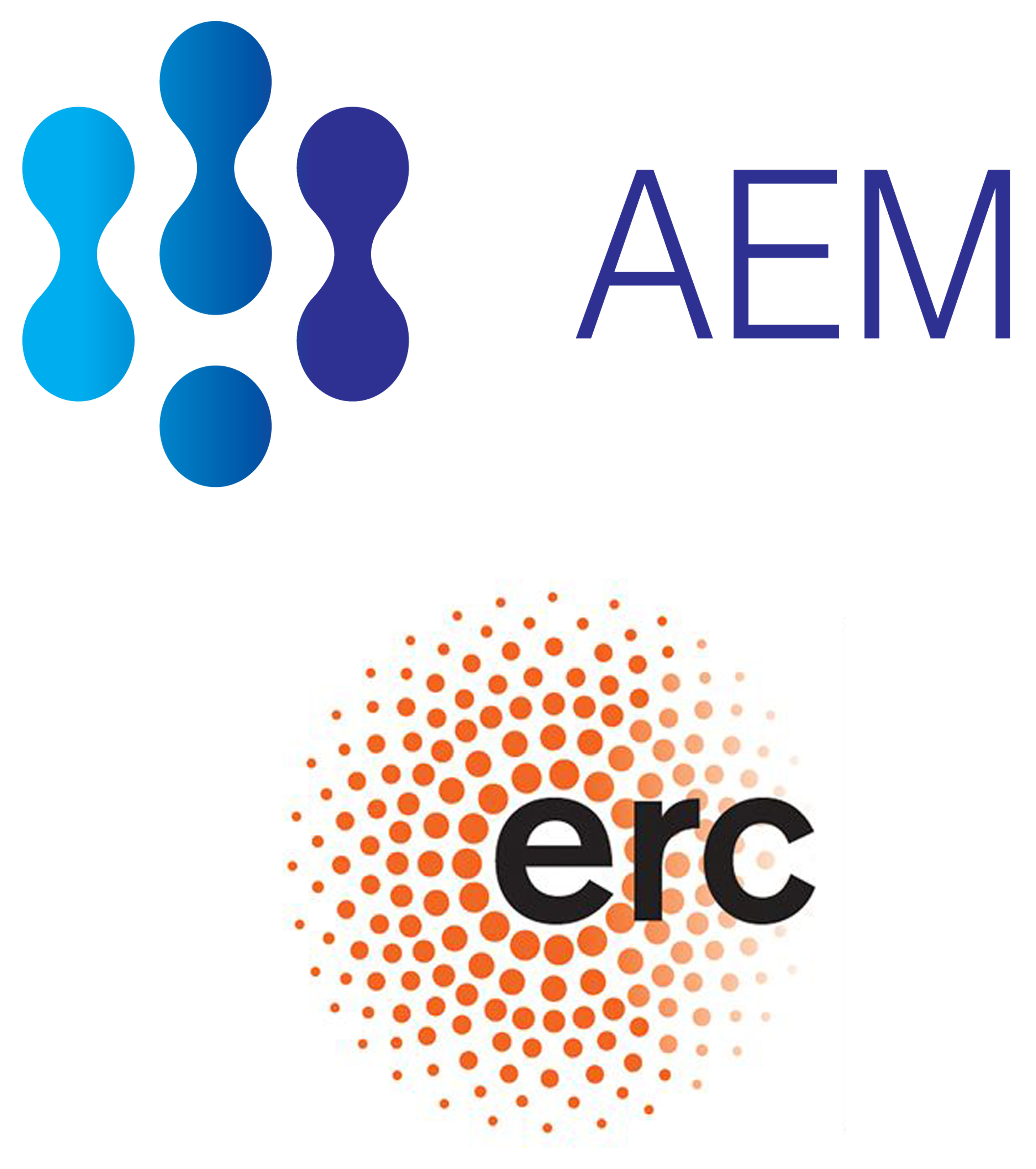In situ investigation of Electrochemical Metallization (ECM) in HfO2-based Resistive Random-Access Memory (RRAM) devices with Advanced (S)TEM Techniques
Project Members: Déspina Nasiou (PhD Student), Leopoldo Molina-Luna (PI)
Description:
RRAM devices are based on a metal-insulator-metal (MIM) structure and show a resistive switching behaviour. HfO2 is chosen for RRAM devices, among the large range of possible insulator materials. The resistive switching results from the formation of a conductive filament (CF) inside the MIM structure. Grain boundaries act as preferential pathways for CF formation in polycrystalline materials and an understanding about the influence of a given microstructure of the insulator on CF formation is needed with advanced Transmission Electron Microscopy (TEM) techniques. In electrochemical Metallization (ECM) the metallic material from the MIM device migrates inside the insulator. This mechanism is based on the repeatable formation and rupture of the CF. Investigation on metallic CF formation inside polycrystalline HfO2 takes place and for this, Cu/HfO2/Pt RRAM devices are investigated during in situ heating with STEM imaging, EELS and Automated Crystal Orientation Mapping (ACOM). Using FIB, TEM lamellas are cut from the device and contacted on a MEMS-based chip, allowing for in situ heating/biasing investigations with (S)TEM.




